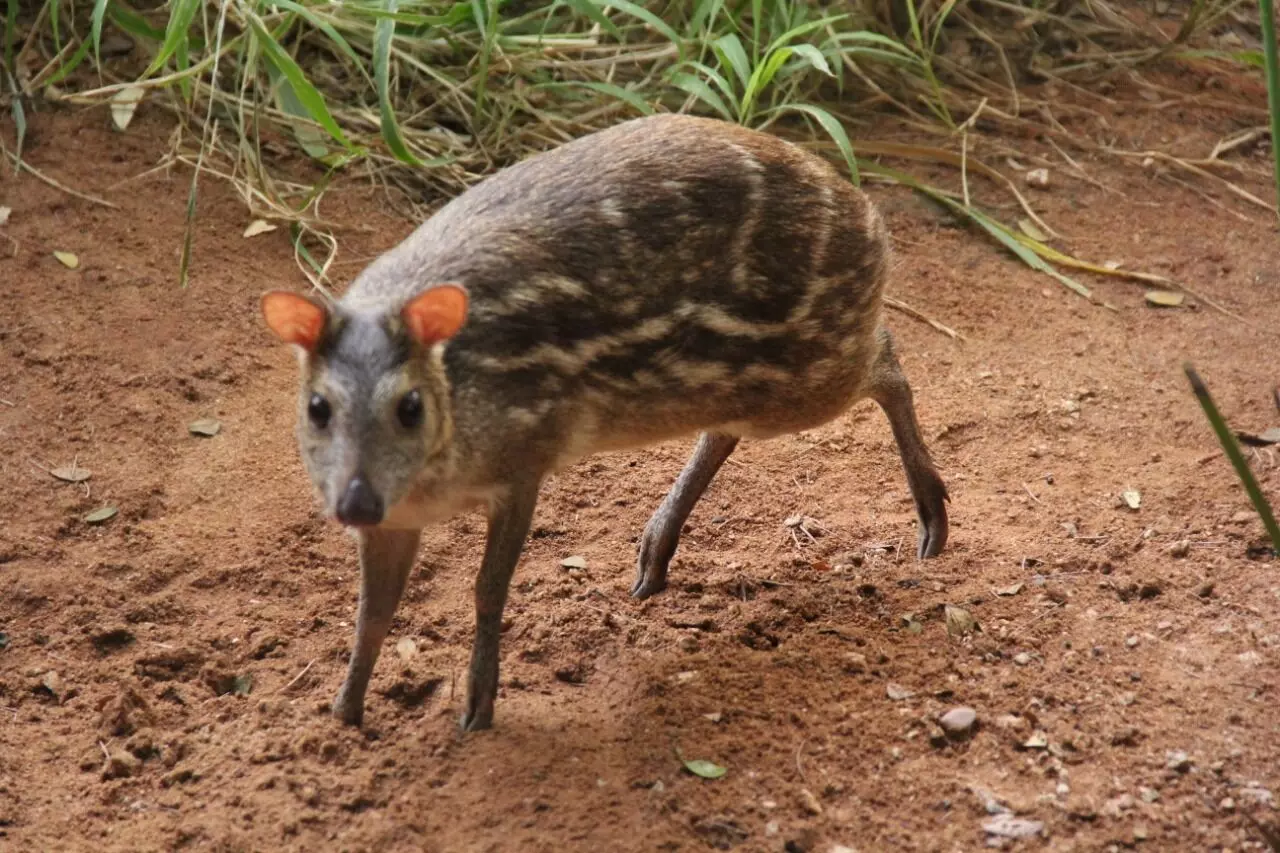Population of highly endangered Indian mouse deer reached 350 in Hyderabad Zoo
In 2010, Nehru Zoological Park had only six Indian mouse deer (Mouschiola Indica). Now, after their conservation program, the Hyderabad zoo has successfully bred more than 350 mouse deers.
By Amrutha Kosuru
Hyderabad: The population of highly endangered Indian mouse deer has reached 350 in Nehru Zoological Park.
In 2010, Nehru Zoological Park had only six Indian mouse deer (Mouschiola Indica). Now, after their conservation program, the Hyderabad zoo has successfully bred more than 350 mouse deers.
Mouse Deer-a a small ungulate, also known as Indian Spotted Chevrotain belongs to the family Tragulidae. "It is a very timid, shy, and nocturnal animal that hides in dense vegetation at the least hint of noise. It prefers to feed exclusively on plant material," said Deputy Zoo Curator A Rajalakshmi.
They are listed as a Schedule-I in the Indian Wildlife Protection Act, 1972.
Deputy Curator explained that the Species had been under tremendous pressure due to habitat destruction and hunting which lead to declining in its population in the wild.
Mouse deer is one of the 73 endangered species identified by the Central Zoo Authority, New Delhi for the conservation breeding program. Nehru Zoological Park, Hyderabad has been assigned the conservation breeding of mouse deer. "Hyderabad Zoo was the first to successfully breed the animals. In 2017, we sent the animals to the Chennai Zoo for breeding," she explained.
The breeding program became successful when the population rose from 6 to 231 in 2017 which further led to the soft release program. "In the soft release program, animals are released into small segments in the wild. "The radius of the segment is altered as per the animal's behavior. This goes on until the biologists and experts are confident that the mouse deer can co-exist with other animals in the wild," she said.
The soft release is done on three compartments/stages with varying dimensions to ensure captive animals are used to the wildlife environment. In the first two stages, a percentage of feed is given to the animals. In the final stage, no feed-in is available.
"Experts monitor all the stages carefully. We gradually reduce the artificial feeding and increase the area allowing the animals to use more area to exhibit its natural behavior," Zoo Biologist Sandeep said.
Reintroduction in the suitable wild habitats has been identified after thorough study in three locations in Telangana i.e Amrabad Tiger Reserve, Kinnerasani Wildlife Sanctuary, and Mrugavani National Park.
Each batch of mouse deers spends at least 15 days in each varying compartment.
So far, Hyderabad Zoo has successfully released as many as 250 mouse deers in various locations to date.
There are currently 150 mouse deers in Hyderabad Zoo in a total of 17 enclosures. "These enclosures have Bamboo, Acalypha, and Palm trees to provide a natural environment to them," explained Sandeep. He said that the mouse deers are ear-tagged and micro-chipped before the soft release so that they can keep track of them.